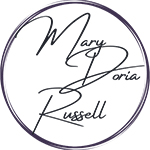Reviewed for the Cleveland Plain Dealer by Mary Doria Russell, June 17, 2012:
Let me begin by saying what this book isn’t. It isn’t an easy beach read and it isn’t about dogs.
The evocative title The Hour Between Dog and Wolf refers to the medieval belief that a tame dog could change into a wild wolf during the hour of dusk. According to Dr. John Coates, it’s a metaphor that reflects what happens within our bodies as we take economic risks.
When a risk pays off, it set us up for the kind of “irrational exuberance” that fuels market bubbles; when a bubble bursts, losing our money – even our theoretical money – can fling us into a death spiral of unthinking fear. As markets seesaw in the aftermath of a crash, hormones whipsaw us from bounding risk-loving wolves to cringing risk-averse dogs, and back again.
Now a Cambridge University senior research fellow in neuroscience and finance – look at that pair of words again – John Coates used to run a derivatives trading desk in New York. He’s worked for Goldman Sachs, Merrill Lynch and Deutsche Bank. He’s experienced first-hand the recent booms and the sickening busts that followed.
Bubbles are fun, Coates admits. Excitement overflows the stock exchange, permeates the culture, and intoxicates people. “[The] widespread silliness attending [booms] is often remembered with a certain amount of humor and fondness [for the good old days when] futuristic technology, blithe spirits and easy wealth seemed to herald a new era of boundless possibility.”
Those days are still fresh in our minds. During the housing bubble, it wasn’t just Wall Streeters who were caught up in the craziness. Sensible Midwesterners took out insane loans to buy huge houses and leased enormous SUVs to park in three-car garages. Middle class weddings became more elaborate than your average papal investiture. Managers at the local Sears tire department started thinking it was reasonable to borrow money for a vacation in Aruba.
And it wasn’t just Americans. This kind of thing was happening around the world. Toward the end, there was a collective Wile E. Coyote rush straight off the edge of a cliff, legs wheel wildly in mid-air, until…suddenly folks noticed there was nothing beneath them and plummeted back to reality.
For Coates, the significance of that is precisely its irrationality.
Classical economics holds that we make rational decisions about money – that people behave, on average, as if they calculate the rewards of each course of action, that “[b]ehind every decision to eat sushi or pasta, to work in aeronautics or banking, to invest in General Electric or Treasury bonds, there purrs the optimizing calculation of a mainframe computer.”
This is “economics from the neck up,” Coates sneers, and it ignores the emotional context of all decision-making.
Coates supports the school of behavioral economics, which questions the existence of disembodied, Spock-like rationality. He focuses instead on the pervasive influence of hormones – testosterone, dopamine, adrenalin, cortisol – on decisions and actions.
Classical economists might expect people to shop for medical care in a rational way, but who checks doctors’ fees during a heart attack or when there’s a bone sticking out of a kid’s leg? The most sensible among us might draw up lists of Pros and Cons about any given decision; behavioral economists and neuroscientists provide physiological evidence that we actually dither until one course of action suddenly and simply “feels right.” We call that feeling a decision.
Unlike Star Trek aliens, we are not big brains perched on insignificant bodies that do our mind’s bidding, Coates argues. We are physical beings. Our bodies provide our decisions.
Coates is a stylish writer with a gift for illuminating metaphors and analogies, and the general reader will appreciate how he balances his own interest in the markets with many other arenas of risk-taking. The narrative of boom and bust, he writes, follows the “arc of tragedy, with its grim and unstoppable logic of overconfidence and downfall… Human biology obeys seasons of its own, and as traders make and lose money they are led almost irresistibly into recurrent cycles of euphoria, excessive risk-taking, and crash.” That same narrative arc can be seen in sports, in politics, and in war, “where larger-than-life characters, believing themselves exempt from the laws of nature and morality, overreach their abilities.”
Ashes, ashes, we all fall down.
John Coates has a great deal to teach anyone who wants to understand what happens before, during, and after a bubble – in banks and brokerages, and in the bloodstreams of the analysts and traders who affect us all.
It is worth noting, however, that Homo sapiens is the only species that’s made the quantum biological leap from prey to predator: we carry the biochemistry of both within us. Reading The Hour Between Dog and Wolf may make you more aware of when you, too, are experiencing that metamorphosis. Maybe next time you make a decision, you can behave just a little more rationally.
